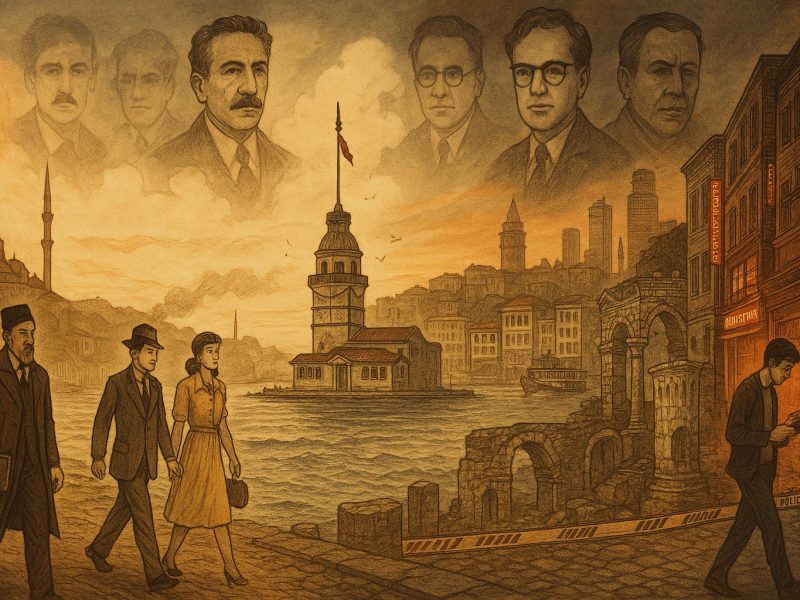Politics, football, art, cinema, love, passion, anger, wealth, poverty, and history; Istanbul embodies all aspects of life and naturally becomes an indispensable setting in Turkish literature. Since the Tanzimat literary era, countless novels have been set in this culturally rich city. However, in some novels, Istanbul transcends its role as a backdrop and emerges as a central character; almost the protagonist of the story.
In Divan poetry, Istanbul appears more symbolically. But with the onset of modernization in Turkish literature, especially from the Tanzimat period onward, Istanbul starts to be depicted vividly, with detailed descriptions of its neighborhoods, streets, and social fabric. The city becomes a living, breathing element in literature.
Istanbul as Protagonist in Tanzimat Era Novels
In novel construction, the setting is as important as the characters and the timeline. Since the Tanzimat era, Turkish novelists have frequently used Istanbul as the primary setting. During this period and the Servet-i Fünun era, authors depicted the city with great detail; reflecting themes of reform, modernization, and superficial Westernization.
The first literary novel in Turkish, “İntibah” (Awakening) by Namık Kemal, paints a vivid picture of areas around Çamlıca, showcasing Istanbul as both beautiful and struggling under the weight of change. Namık Kemal uses traditional language to critique the westernization movements of the era.
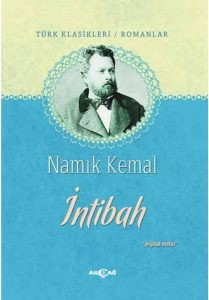
Another pivotal work, “Üç İstanbul” (Three Istanbul) by Mithat Cemal Kuntay, takes readers through three distinct phases of Istanbul’s political and cultural transformation in 1938. The novel, centering around the character Adnan, captures the bourgeois mansions, Ottoman palaces, and elite libraries, subtly revealing the political decay leading to the fall of the Empire.
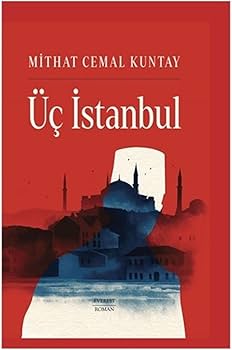
National Literature Era: A Symbolic and Divided Istanbul
During the National Literature Era, the literary gaze expands to include Anatolia, but Istanbul remains dominant. One notable example is “Fatih Harbiye” by Peyami Safa. The novel uses its characters –Şinasi (symbolizing the East) and Macit (the West)- to represent the ideological split between traditional and modern cultures in Turkey. Istanbul neighborhoods like Beyoğlu, Fatih, and Harbiye are depicted as arenas of this cultural conflict. Safa captures both Turkish classical music venues and Western music halls, making Istanbul a symbol-laden character.
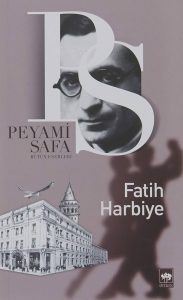
Similarly, Safiye Erol’s 1938 novel “Kadıköyü’nün Romanı” (The Novel of Kadıköy) transports readers to Kadıköy, beautifully depicting areas like Moda, Kalamış, Haydarpaşa, and Kız Kulesi, making the city a romantic backdrop for the personal struggles of young people during the early Republic years.
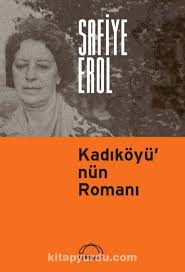
Istanbul as the Protagonist: From “Huzur” to “Aylak Adam”
The first novel where Istanbul is no longer just a setting but a main protagonist is “Huzur” (A Mind at Peace) by Ahmet Hamdi Tanpınar (1948). In this melancholic masterpiece, the city is intricately tied to emotions, with heavy emphasis on Turkish art music and Istanbul’s poetic melancholy.
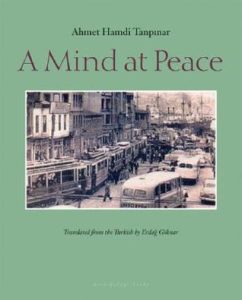
In 1959, Yusuf Atılgan’s “Aylak Adam” (The Loiterer) revolutionizes the portrayal of Istanbul. Breaking away from the romanticized version of the city, this novel realistically reflects urban change. It highlights immigration from Anatolia, loss of traditional culture, and the impacts of urbanization, all seen through the protagonist’s disillusionment.
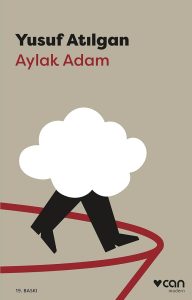
Modern Literature: Istanbul in the Works of Orhan Pamuk and Ahmet Ümit
In contemporary Turkish literature, Orhan Pamuk is perhaps the most significant figure who constantly centers Istanbul in his narratives. In “Kara Kitap” (Black Book), he navigates the backstreets of Beyoğlu, Şişli, and Tarlabaşı, portraying a gritty and dark urban life. His works such as “Benim Adım Kırmızı” (My Name is Red) and “Kafamda Bir Tuhaflık“ (A Strangeness in My Mind) explore Istanbul’s layered history and cultural shifts over the past 40 years.
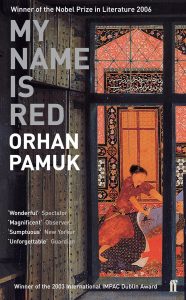
Ahmet Ümit’s detective novel “İstanbul Hatırası“ (Memento for Istanbul) seamlessly combines mystery with history, taking readers through Istanbul’s historic districts like Balat, Samatya, Zeyrek, and Sarayburnu. The novel includes references to the Roman, Byzantine, and Ottoman periods, offering a deeply immersive experience of the city.
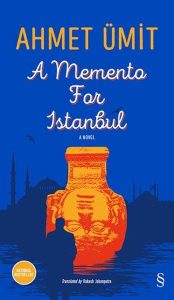
Istanbul’s Enduring Role in Turkish Fiction
From the Tanzimat era to the present day, Istanbul has transformed from a beautiful backdrop into a literary protagonist, bearing witness to -and actively shaping- the cultural, political, and emotional narratives of Turkish society. If you want to truly understand Istanbul’s identity, its soul is perhaps best revealed in the novels where it plays the leading role.

